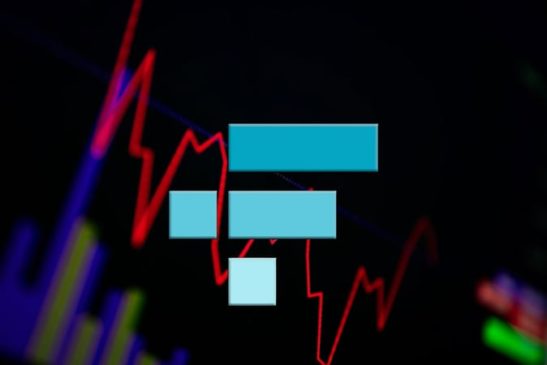According to SBF, Ellison’s failure to hedge Alameda’s financial positions was a major contributing factor in the FTX’s financial troubles.
In a dramatic turn of events at the ongoing criminal trial of FTX founder Sam Bankman-Fried, the renowned crypto entrepreneur pointed fingers at his former close associates, especially Caroline Ellison, his ex-girlfriend and former CEO of Alameda Research, for the downfall of his crypto empire.
During his recent testimony on Monday, Bankman-Fried retook the stand where he and his defense team, led by Mark Cohen, talked about hedging, explicitly focusing on their belief that Ellison failed to take proactive measures that could have protected Alameda from the 2022 crypto winter which seriously endangered the hedge fund.
‘She Started Crying’
The former FTX CEO, facing potential life-altering charges, disclosed a series of private conversations he had with Caroline between June and September last year about the financial health of Alameda in the face of further market decline.
He claimed to have been deeply concerned about the significant drop in Alameda’s net asset value from $40 billion to $10 billion, expressing his fears of potential insolvency if market conditions deteriorated further.
Bankman-Fried told the jury that he had urged Ellison to take immediate hedging measures to safeguard the firm’s assets, but instead, she stepped down as CEO of Alameda.
The once-upon-a-time crypto white knight said his ex-girlfriend started crying when he told her that if Alameda’s net worth dropped further to 50%, she would have to consider bankruptcy.
“She started crying,” Bankman-Fried said, regarding Ellison’s reaction when he told her that. “She agreed.”
According to him, Ellison’s failure to hedge Alameda’s financial positions was a major contributing factor in the FTX’s downfall.
Bankman-Fried also talked about other events that potentially led to the sudden collapse of FTX. He also blamed Binance for taking part in the collapse of the exchange, citing their sale of FTX’s native crypto FTT as a sign of lost confidence in the company.
The former FTX CEO said that after Binance backed out of their acquisition deal to buy the company, customers began withdrawing assets, which affected the exchange.
Bankman-Fried Blames Executives for FTX Downfall
The trial, now in its final weeks, has witnessed the prosecution’s relentless efforts to implicate Bankman-Fried in the mismanagement of client funds and subsequent financial distress.
Former employees turned witnesses have detailed specific actions Bankman-Fried took that allegedly led to the loss of billions of dollars belonging to customers.
Bankman-Fried recounted how Gary Wang, a co-founder who had previously testified for the prosecution, informed him about the backlog of withdrawal requests being related to a backlog of Bitcoin (BTC) withdrawals. Wang assured Bankman-Fried that he was actively working on rectifying the issue through adjustments in the code.
In another instance, the FTX founder shared insights about FTX’s engineering director, Nishad Singh, who was called as a government witness. He expressed concerns about Singh’s personal financial struggles, highlighting that Singh was grappling with severe emotional distress, leading to the need for constant therapeutic support.
Bankman-Fried said he provided Singh with emotional comfort and support, particularly in managing his loans and financial obligations to prevent harmful outcomes.
After his testimony about Singh’s crisis, he directed attention toward Can Sun, FTX’s former general counsel. According to him, Bankman-Fried and Sun discussed his investment fund company, Apollo, before his follow-up call regarding the firm.
He disclosed that the spreadsheet shared with Apollo included a significant $8 billion liability, clarifying that he had briefed Apollo based on his understanding of the framework pertaining to the fiat account during their conversation.
US Attorney Questions Bankman-Fried
When FTX’s defense team finished questioning, the assistant US attorney Danielle Sassoon took charge of cross-examination.
Throughout the cross-examination, Bankman-Fried faced intense scrutiny from the prosecution, who brought attention to his public persona and contradictory statements about FTX’s operations.
Sassoon questioned his clothing choices, referencing a colleague’s statement to the New York Times report where Bankman-Fried allegedly said that cutting his hair would negatively impact his public image. The colleague reportedly claimed:
“I think it’s important for people to think I look crazy.”
Ellison, in her testimony, also suggested that Bankman-Fried deliberately crafted his unpolished appearance.
Bankman-Fried responded, stating:
“I don’t think I said that in that way.”
He reiterated his earlier testimony, emphasizing that his decision not to cut his hair was due to being occupied and not because of any intentional strategy.
When asked by Sassoon whether he remembered telling another investor, who requested him to dress in a suit, that “a T-shirt and shorts” were a part of his brand, Bankman-Fried stated that he could not recollect making such a comment.
Meanwhile, in court, Bankman-Fried was seen wearing a grey suit with trimmed hair.
Chimamanda is a crypto enthusiast and experienced writer focusing on the dynamic world of cryptocurrencies. She joined the industry in 2019 and has since developed an interest in the emerging economy. She combines her passion for blockchain technology with her love for travel and food, bringing a fresh and engaging perspective to her work.



